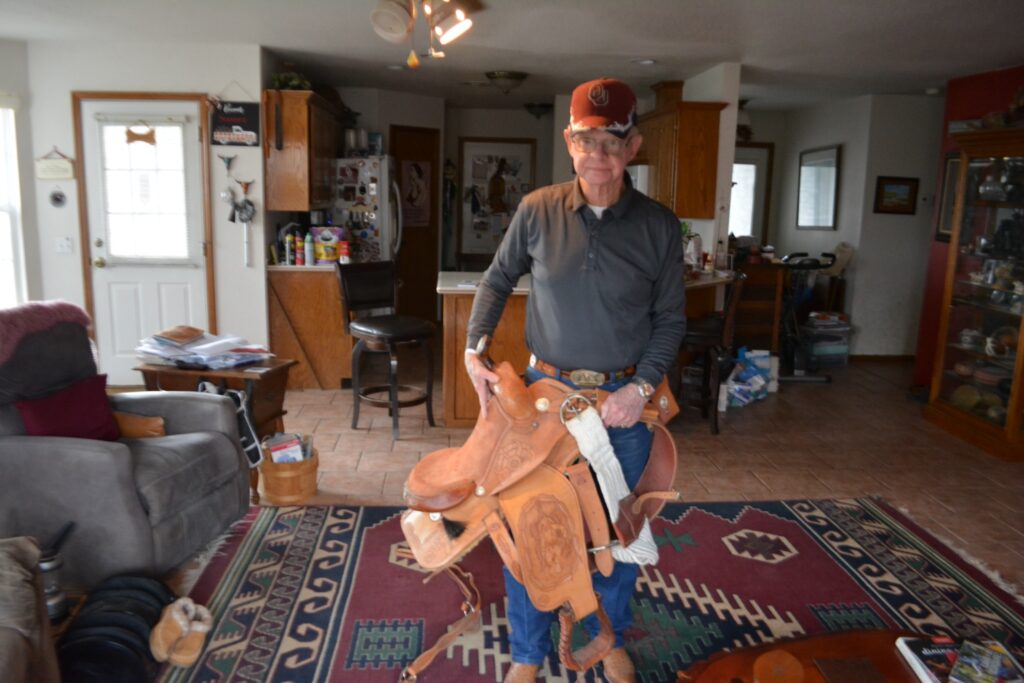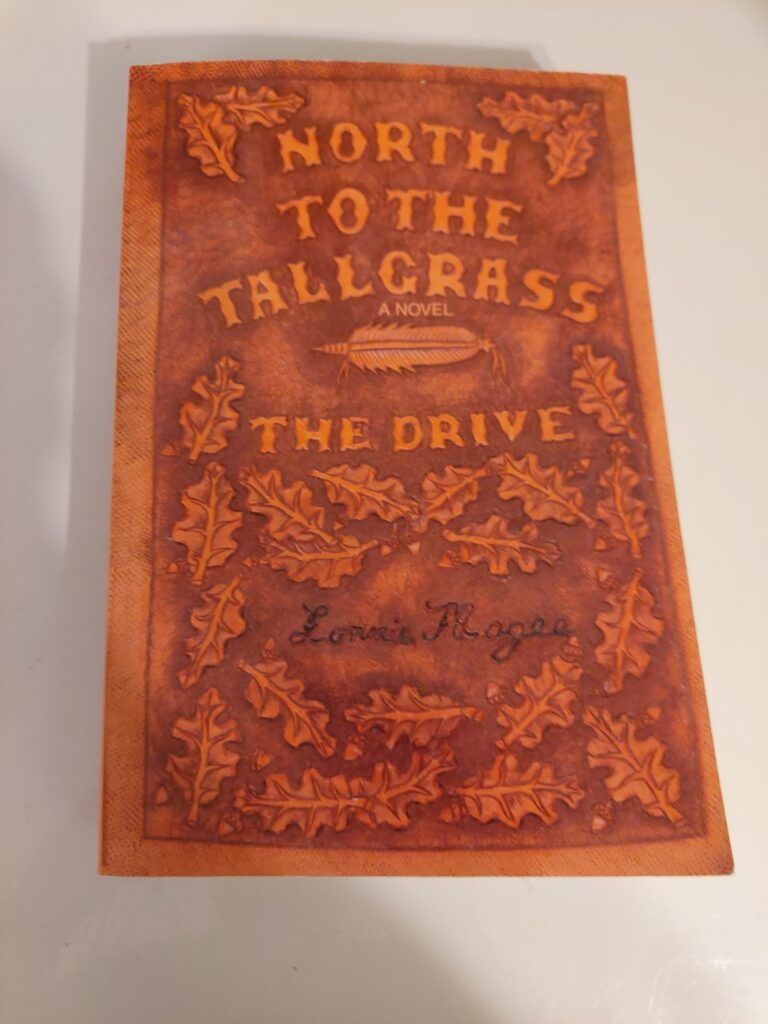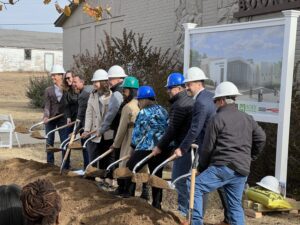Lonnie Magee, saddlemaker, leather artist, and western novelist, was introduced to horses at the age of three. “My dad and grandfather went together, and they paid $20 for a pony. My one grandfather said that was a dollar for every year he is old right now.”
Although the pony was getting up in years, the equine was still somewhat of a bronc. “If you tried to get him out of a trot and into a lope or canter, he would buck. It wasn’t a serious buck, but he would kick up behind every jump,” said Magee.
Lonnie started roping for money at the age of eleven. “There weren’t that many places that had junior roping…If I would get to rope someplace every other week, I was thrilled to death. The entry fee was two dollars, three dollars, and it just kept getting bigger.”

Bull riding was next. “Like every young idiot wanting to be the cowboy type thing, I tried bulls.”
“I was bucked off the first one, rode the second one, and made a little money. Then I was going to be Jim Shoulders, who at that time was the World’s Champion Bullrider, and I made money for the next two shows.”
His sixth bull ride was most memorable. Magee noted that since he was only 4 foot 11 inches and 98 pounds at the time, the bull seemed enormous. After he was on the bull, the animal went into a “suicide spin.” He was using a spur to control the animal when the bull’s head “disappeared.”
“He came back this a-way, he reversed, and the next thing I know I am sitting straddle of him…and I am looking at his tail.” A moment later, Magee was on the ground looking up at the bull. “He is not happy, he’s looking at me and throwing dirt.”
Another cowboy slipped the bull with a set of chaps and ran to the fence and the bull took after him. That ended Lonnie’s desire to be a bull rider. Magee continued roping, and at one point in his life, participated in professional rodeo events, bare-back riding, which he said caused problems with his shoulder, and even tried his hand at barrel racing.
Magee had been interested in leatherwork since he was a young man. He began working in leather when he was thirty because he wanted a custom belt. “I wanted a belt, and on my belt, I wanted, of course, my name, and I wanted the shield of Oklahoma on both slides. My cousin, who was a leather worker, says it can’t be done.” However, he proved his cousin wrong.
Through the years he has proven to be not only a skilled saddle maker but an accomplished artist who works in leather. He has made purses, book covers, saddle accessories and raised leather artwork.
The intricacy of his leatherwork is simply astonishing. He pointed out the amount of detail on a Native American Dancer he created out of raised leather.
Magee spent two years in the Army as a draftsman and illustrator. After the military, he worked for Phillips Petroleum and subsequently went to work as a draftsman. He would later work as an estimator in the oilfield equipment business.
His foray into writing novels began on a whim. He was rather upset with one of the engineers who had made an erroneous estimate due to listing the wrong materials. While stewing over this mistake, instead of doodling, Lonnie took out a yellow legal pad and started writing. A year later he had a printer-paper box full of handwritten manuscripts, and he wrote, “The end.”
“I had rubber bands around them, but the problem was I hadn’t numbered the pages,” he said. “While moving into their new home, the bottom fell out of the box. His wife turned to him and said: “you will number all the pages the next time, won’t you, darling”?
Lonnie had written so many pages that he found it was far too voluminous for one book, so he created a trilogy. The first was North To The Tallgrass-The Drive, followed by North To The Tallgrass-Settling In, and North to the Tallgrass-Osage Legacy. He currently has piles of manuscripts that will someday become published books.

He took his first book to the owner of Steve’s Sundry in Tulsa, a drug store that sold books, periodicals, and newspapers from around the country. The owner’s daughter-in-law read the book. After reading the book, she called Lonnie and asked, “how many books have you got?” Magee told her he had about two hundred at his house. She set up a book signing at the store and later showed the book to a member of a local writing group. The next thing Lonnie knew, he had a half-page story about his book that was published in the Tulsa World. The article compared Magee to Louis L’Amour and other well-known western writers. Since then, he has written Little Man’s Dream, When Quick Guns Ruled, Tipping the Scales, which is a period piece about Creek County set in the early 1900s, and West to The Dream.
Magee says he strives to accurately portray what life was like in the Old West. For example, most writers and Hollywood portray most cowboys as 6 feet plus with broad shoulders. He said the truth is, because of diet, most men were not very tall back then.
He says he chose the western genre because “one should write what they know.” Furthermore, Magee quipped that writing about a draftsman would not be entertaining.
Although he says he was only a rodeo participant, not a real cowboy, he nonetheless brings to life the cowboy culture with his art and his writing.
Lonnie Magee’s novels are still for sale. He can be reached at 918-521-4794.










